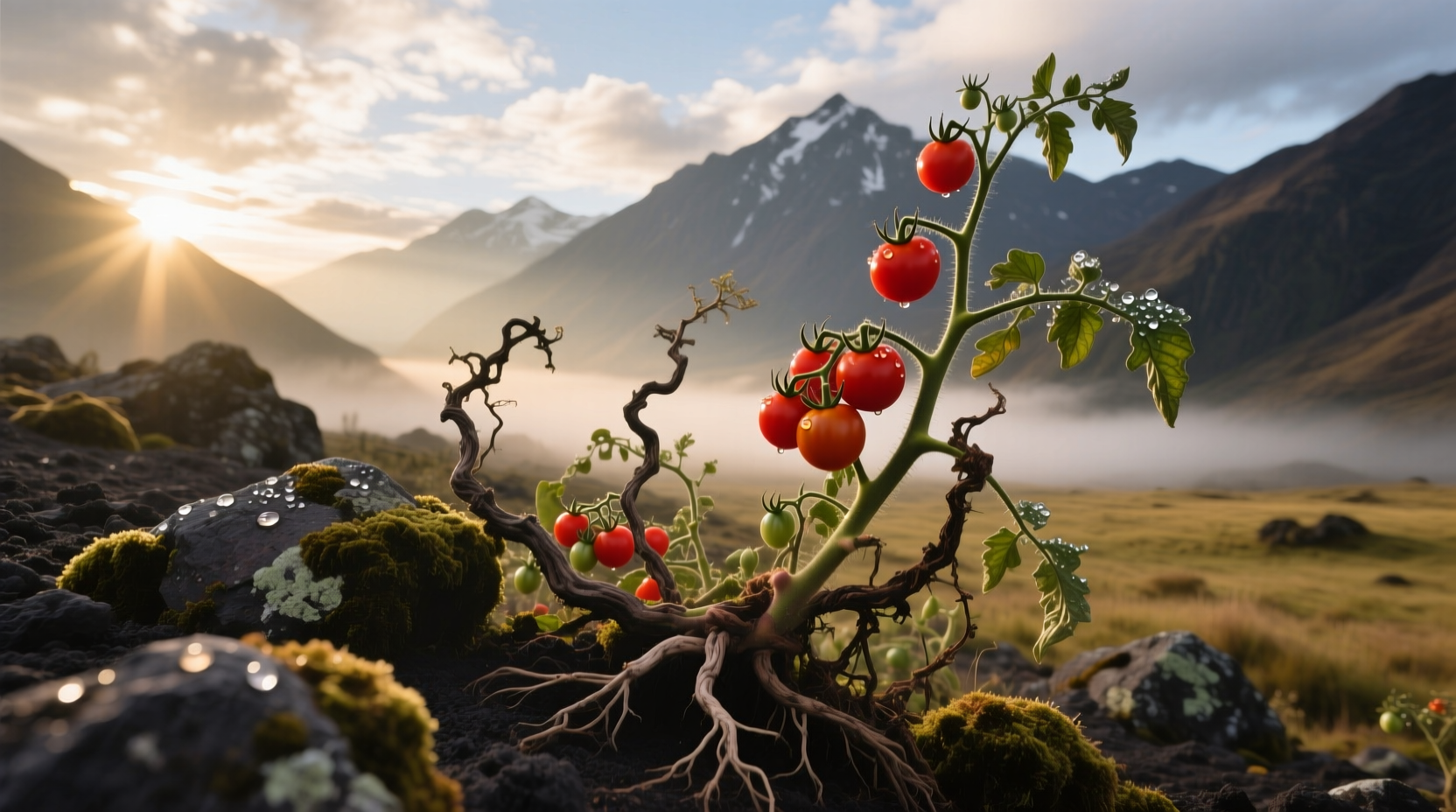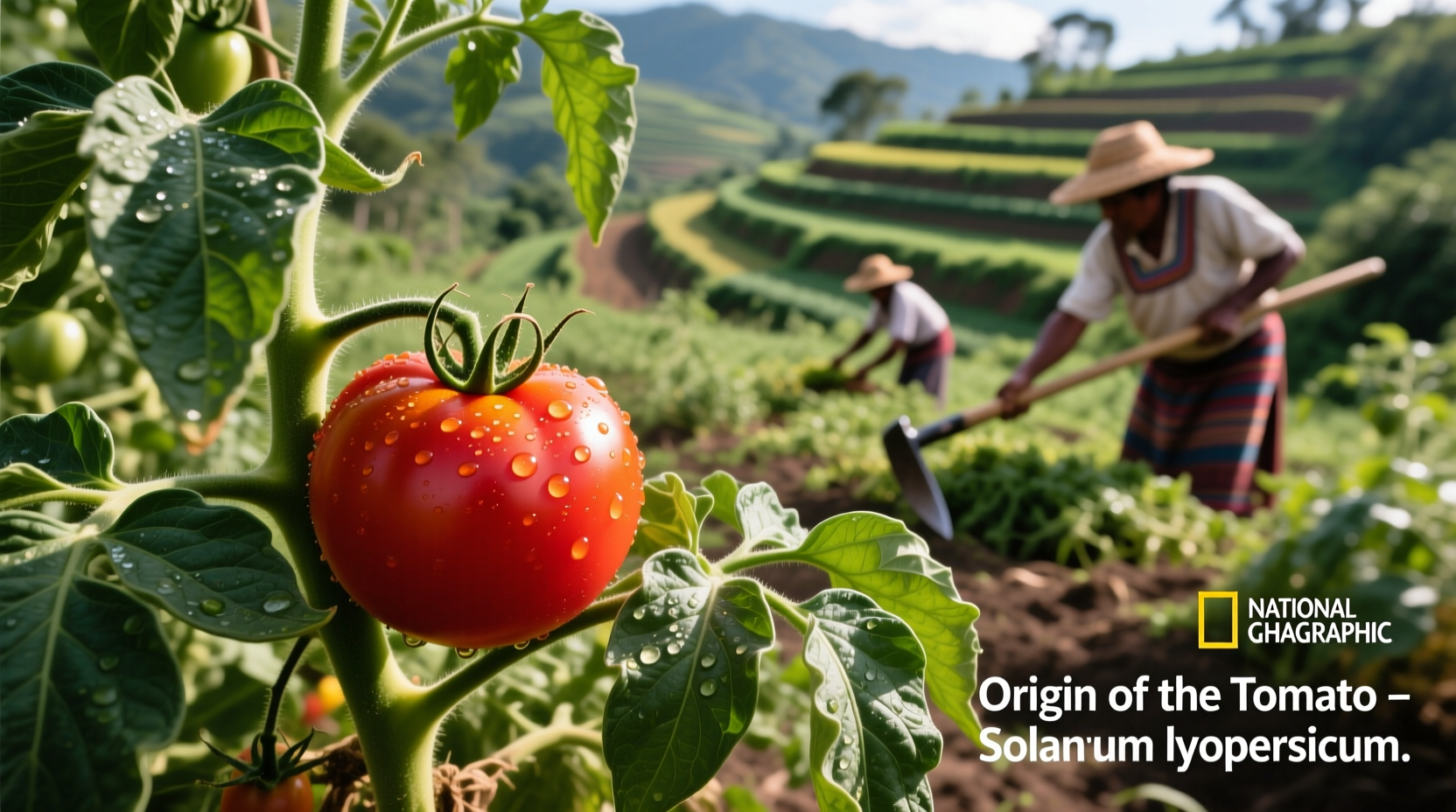For centuries, this vibrant fruit shaped global cuisines while overcoming skepticism and misconceptions. Understanding the tomato's journey reveals how a simple plant transformed from an obscure Andean berry into the world's most popular "vegetable" (despite being botanically a fruit). This article explores the verified historical path of tomatoes with archaeological evidence, botanical research, and cultural context you won't find in superficial summaries.
The Botanical Birthplace: Solanum lycopersicum's Natural Habitat
Modern genetic analysis confirms tomatoes belong to the nightshade family (Solanaceae) with their scientific name Solanum lycopersicum. Wild tomato species still grow in the Andes mountains across Peru, Ecuador, and northern Chile. Archaeological evidence from Monte Verde, Chile shows humans consumed wild tomatoes as early as 8,000 BC.
Unlike today's plump varieties, these ancestral tomatoes were small, berry-sized fruits. Indigenous peoples selectively bred them for desirable traits, creating the first cultivated varieties. The Aztecs called them xitomatl (meaning "plump thing with a navel"), incorporating them into salsas and stews long before European contact.
Tomato Timeline: Key Milestones in Global Spread
- 8,000 BC: Earliest evidence of wild tomato consumption in Chile's Monte Verde settlement
- 500 BC: Indigenous peoples in Mesoamerica begin domesticating tomatoes
- 1521: Spanish conquistadors encounter tomatoes in Aztec markets
- 1540s: First European tomato cultivation records in Spain and Italy
- 1700s: Tomatoes gain acceptance across Europe after initial fears of toxicity
- 1835: First commercial tomato cultivation in the United States (New Jersey)
- 2023: Global production reaches 186 million metric tons annually
From Suspicion to Staple: Europe's Rocky Relationship with Tomatoes
When Spanish explorers brought tomatoes to Europe in the 16th century, they faced widespread suspicion. Many Europeans believed tomatoes were poisonous because they belong to the nightshade family, which includes deadly plants like belladonna. Wealthy Europeans used tomato plants as ornamental decorations but avoided eating the fruit.
Italy became the first European country to embrace tomatoes culinarily. By the late 17th century, Neapolitan cooks incorporated them into sauces. The turning point came when Robert Johnson publicly ate tomatoes in Salem, New Jersey in 1820 without dying, helping dispel American fears. Scientific analysis later confirmed tomatoes contain negligible amounts of solanine, the toxic compound found in other nightshades.
Modern Tomato Production: Global Leaders and Varieties
Today, tomatoes rank as the world's most widely grown vegetable crop. The Food and Agriculture Organization (FAO) tracks global production data showing significant regional differences in cultivation and consumption patterns.
| Country | Annual Production (Million Tons) | Primary Uses |
|---|---|---|
| China | 67.1 | Fresh market, processing, exports |
| India | 20.4 | Fresh consumption, sauces |
| United States | 11.8 | Canned products, fresh market |
| Turkey | 11.5 | Paste, dried tomatoes |
| Egypt | 9.2 | Export, fresh market |
Data source: FAO Corporate Statistical Database (2023)
Cultural Adaptation: How Different Regions Made Tomatoes Their Own
The tomato's journey demonstrates remarkable cultural adaptation. In Italy, it became essential to pasta sauces and pizza. In Spain, it forms the base of gazpacho. Mexico developed complex salsas using native heirloom varieties. Each region developed unique preparation methods that enhanced flavor while addressing local concerns.
For example, Mediterranean cultures discovered that cooking tomatoes with olive oil increases lycopene absorption. In contrast, Andean communities traditionally consumed them raw with chili peppers and salt. These regional variations showcase how practical knowledge evolved alongside culinary traditions.

Tomato Science: Understanding Modern Varieties
Modern breeding has created thousands of tomato varieties categorized by growth habit, shape, and color. Determinate varieties grow to a fixed size and produce one harvest, while indeterminate types continue growing throughout the season. Common types include:
- Beefsteak: Large, meaty tomatoes ideal for sandwiches
- Cherry: Small, sweet varieties perfect for snacking
- Roma: Oblong shape with thick flesh for sauces
- Heirloom: Open-pollinated varieties with historical significance
Genetic research continues to improve disease resistance and nutritional content. Scientists at the USDA Vegetable Laboratory have developed varieties with higher lycopene content, while Peruvian researchers work to preserve native wild species that may hold valuable genetic traits for future breeding.
Practical Takeaways for Tomato Enthusiasts
Understanding tomato origins helps you make informed choices:
- Choose heirloom varieties for authentic historical flavors
- Store tomatoes at room temperature to preserve flavor compounds
- Cook tomatoes with healthy fats to maximize lycopene absorption
- Support local growers preserving native varieties
- Experiment with traditional preparation methods from different cultures
Common Questions About Tomato Origins
Are tomatoes native to Europe?
No, tomatoes are not native to Europe. They originated in western South America and were introduced to Europe by Spanish explorers in the 16th century. Europeans initially considered them poisonous and grew them as ornamental plants before gradually accepting them as food.
What country first cultivated tomatoes?
Archaeological evidence indicates indigenous peoples in Mesoamerica, particularly the Aztecs in present-day Mexico, were the first to cultivate tomatoes around 500 BC. They developed early domesticated varieties from wild Andean species.
Why did Europeans think tomatoes were poisonous?
Europeans associated tomatoes with the nightshade family, which includes deadly plants like belladonna. The acidic nature of tomatoes also caused lead poisoning when served on pewter plates, reinforcing the belief that tomatoes themselves were toxic. Scientific understanding later revealed the actual cause was the metal reaction, not the tomatoes.
How did tomatoes become popular in Italian cuisine?
Tomatoes entered Italian cuisine through Spanish influence after the Kingdom of Naples came under Spanish rule. By the late 17th century, Neapolitan cooks began using tomatoes in sauces. The first documented tomato recipe in Italian cuisine appeared in 1692. Their popularity grew as chefs discovered tomatoes enhanced pasta dishes and preserved well in olive oil.
What's the difference between wild and cultivated tomatoes?
Wild tomatoes from the Andes are typically small (berry-sized), grow in challenging mountain conditions, and have higher genetic diversity. Cultivated varieties have been selectively bred for larger size, sweeter flavor, thicker flesh, and disease resistance. Modern breeding has increased fruit size up to 100 times that of wild ancestors while reducing natural pest resistance.











 浙公网安备
33010002000092号
浙公网安备
33010002000092号 浙B2-20120091-4
浙B2-20120091-4